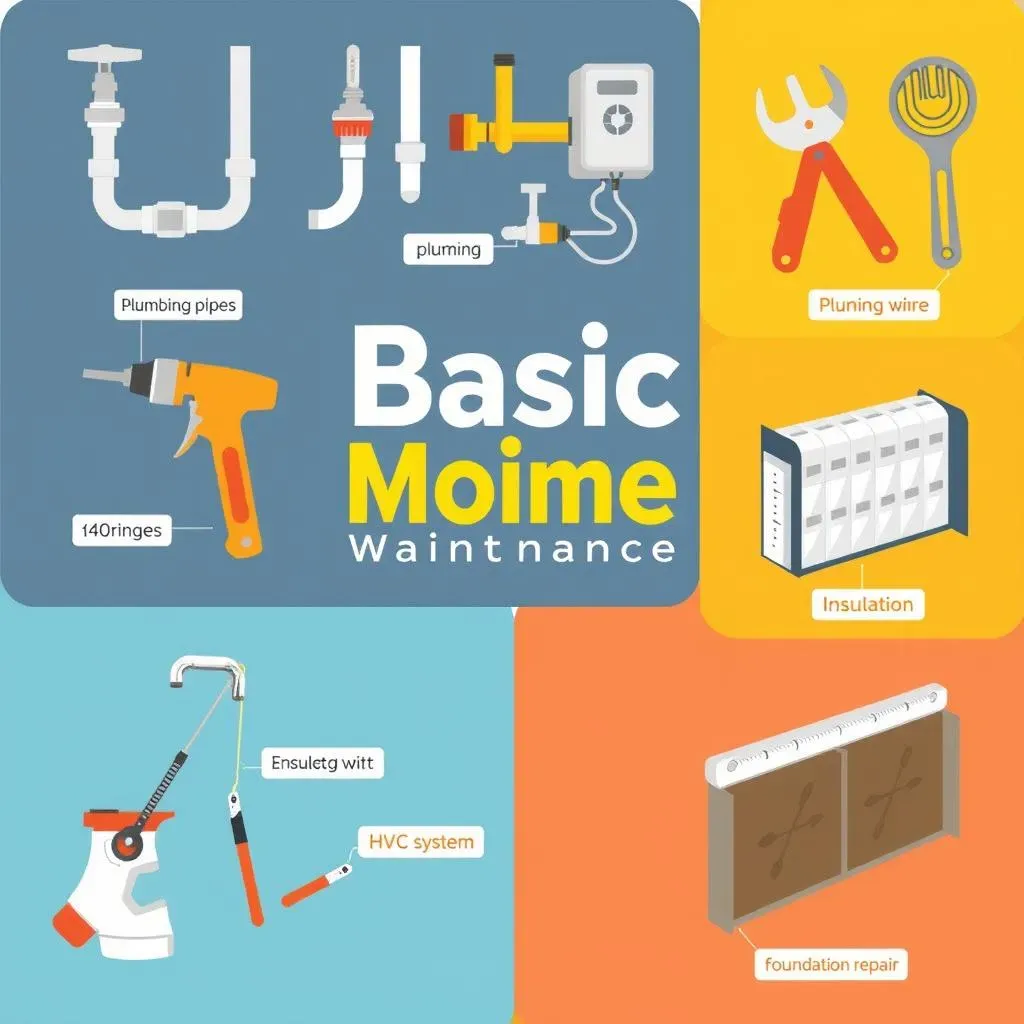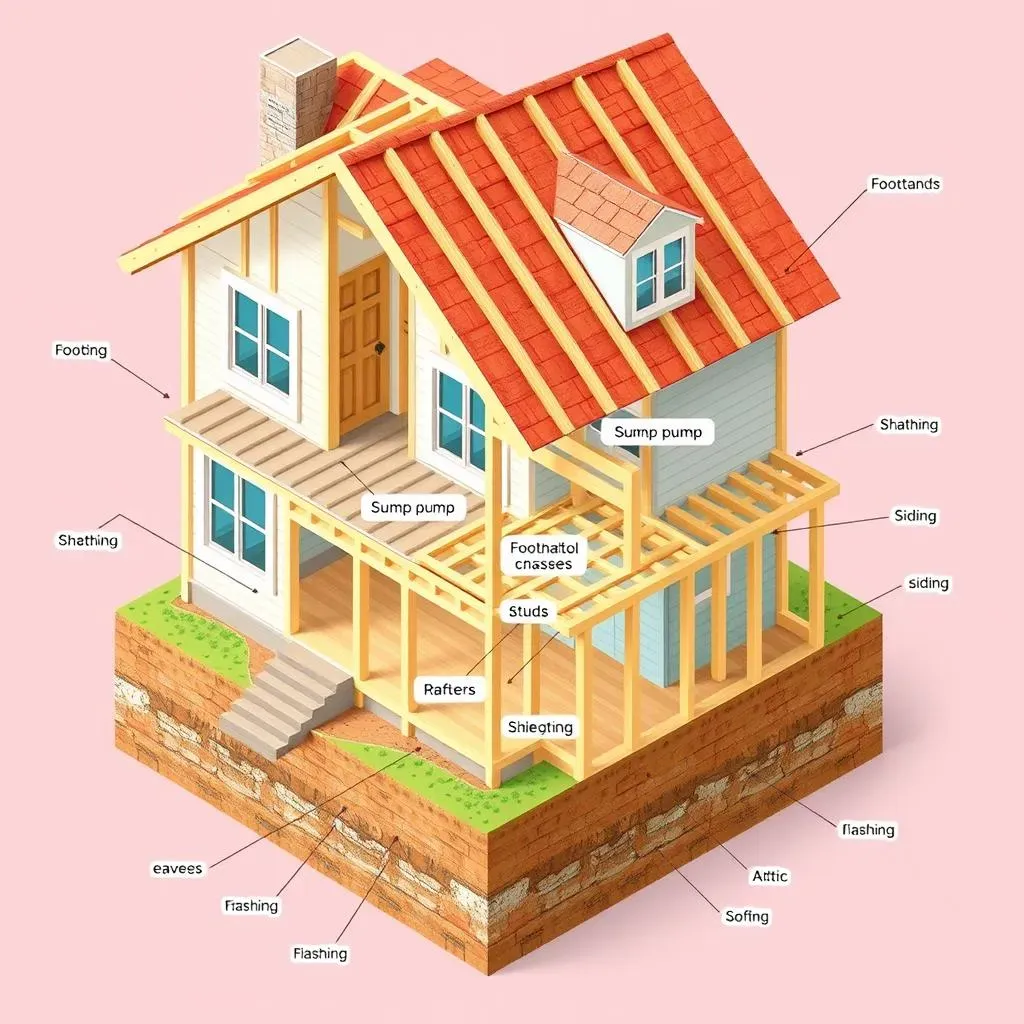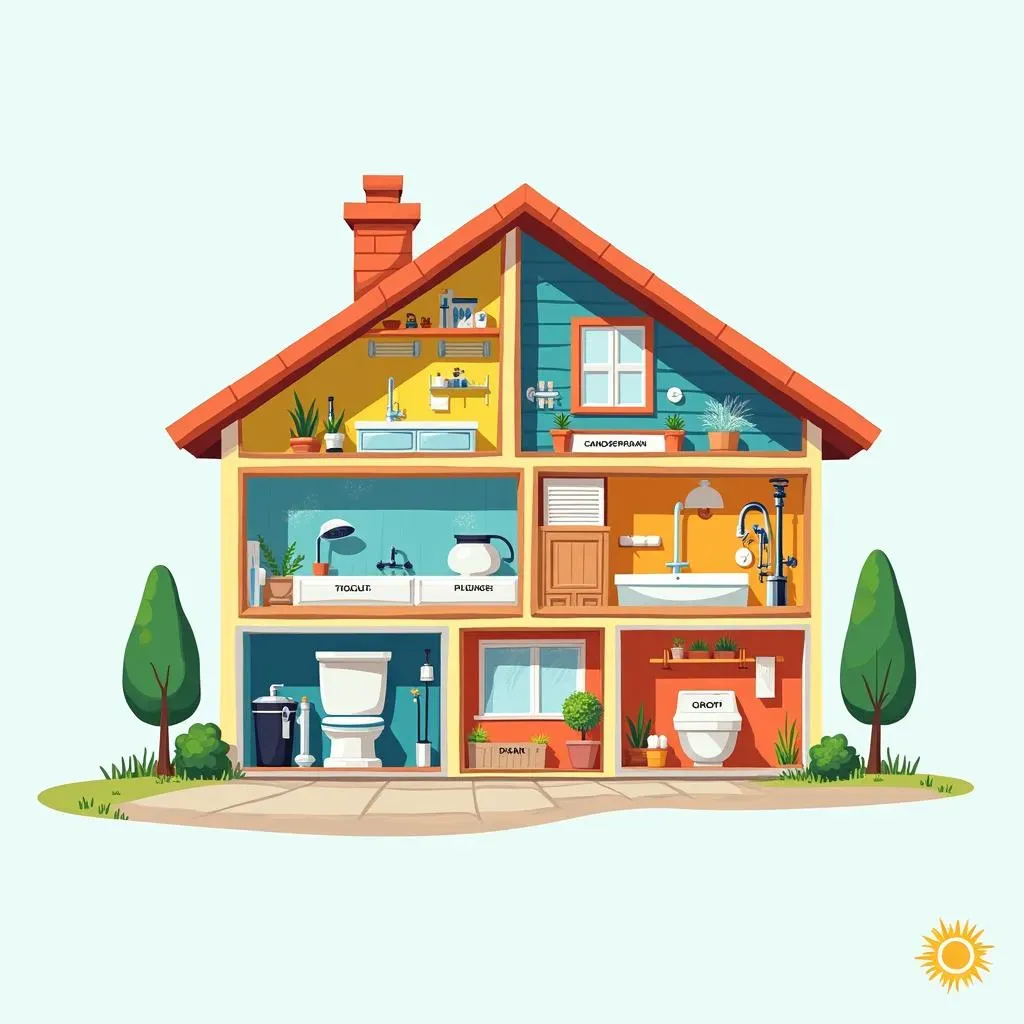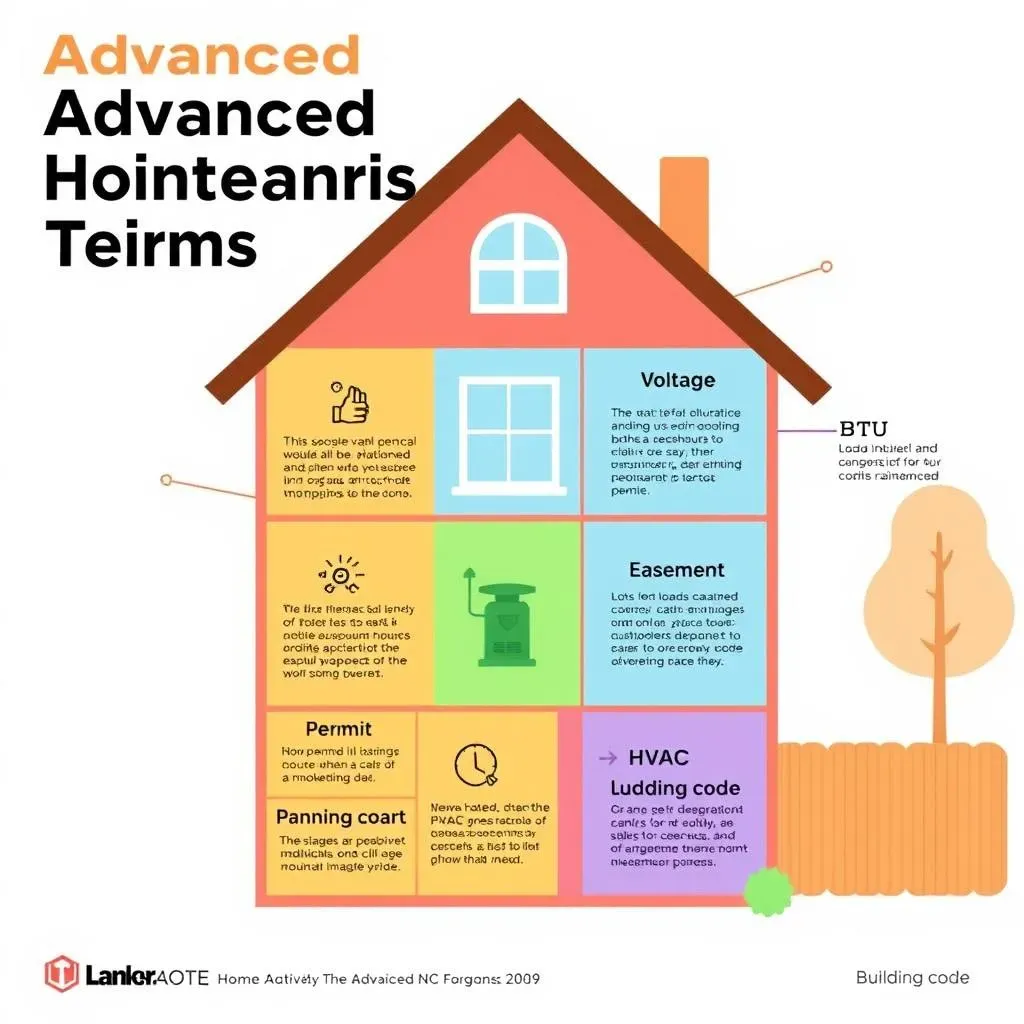Table of Contents
Ever stared blankly at a home repair manual, feeling like you're reading a foreign language? You're not alone. Home maintenance can seem like a secret club with its own set of baffling terms. From "soffit" to "caulk," the world of home upkeep is filled with words that can leave even the most enthusiastic DIY-er scratching their head. That's why I’ve put together this guide to help you navigate the confusing maze of "home maintenance words". Think of this article as your friendly translator, breaking down the essential terms you'll need to know to keep your home in tip-top shape. We'll start with the basics, then move through specific areas of your house, and even touch on some more advanced concepts. No more feeling lost when a plumber starts talking shop – by the end of this, you'll be fluent in home maintenance lingo.
Basic Home Maintenance Words Everyone Should Know
Basic Home Maintenance Words Everyone Should Know
The Foundation Words
Let's start with the basics, the real bread and butter of home maintenance. These are words you'll hear constantly, so it's good to get comfy with them. We're talking about things like "plumbing," which is all the pipes that carry water in and out of your house. Then there's "electrical," which is obviously about the wires and circuits that power everything. And don't forget "HVAC"—that's your heating, ventilation, and air conditioning system. Pretty important stuff, right?
Another big one is "insulation," which keeps your house warm in the winter and cool in the summer. Think of it like a big cozy blanket for your home. And finally, "foundation," the concrete base your entire house sits on. These aren't just fancy words; they're the building blocks of understanding how your home works.
Essential Action Words
Now that we know some of the main systems, let's talk about what you actually *do* to keep them running. You'll hear "inspect" a lot, which means to check something carefully. Then there's "repair," which is fixing something that's broken. And of course, "replace," which means swapping out an old or damaged part with a new one. "Caulk" is another one, it's the stuff you use to seal gaps around windows and doors. It's like the home's version of spackle, but more flexible. It's a simple but mighty tool to keep water out.
Also, don't forget "maintain," which is the ongoing work of keeping your home in good shape. These action words are the verbs of home maintenance, telling you what to do to keep things running smoothly.
Understanding the Materials
Finally, let's chat about the materials you'll often encounter. "Drywall" is the stuff that makes up your walls, it's like the paper-covered plaster. "Lumber" is wood, which you'll see everywhere from your floors to your roof. And "shingles" are the tiles on your roof. These materials are the nouns of home maintenance, the things you'll be working with and around.
Understanding these basic "home maintenance words" will give you a massive head start in taking care of your home. It's like learning the alphabet before you read a book, you need the basics to understand the bigger picture.
Word | Definition |
|---|---|
Plumbing | Pipes and systems for water supply and drainage. |
Electrical | Wiring and circuits for power. |
HVAC | Heating, ventilation, and air conditioning. |
Insulation | Material used to keep a building warm or cool. |
Foundation | The base upon which a building sits. |
Understanding Home Repair Words: From Foundation to Roof
Understanding Home Repair Words: From Foundation to Roof
Starting at the Bottom: Foundation and Basement Terms
Okay, so we've got the basic home maintenance words down. Now, let's get into the nitty-gritty of home repair, starting with the foundation. This is where it all begins, literally. You'll often hear about "footings," which are the concrete pads that support the foundation walls. Then there's the "slab," which is the flat concrete base some homes have instead of a basement. If you've got a basement, you might hear about "sump pumps," which are there to prevent flooding. These are the unsung heroes of your house, working hard to keep the whole thing stable and dry.
Another important term is "retaining wall." This wall is built to hold back soil, often around a basement or sloped yard. It's not just a wall; it's a structure doing serious work. You should also be aware of the term "crawl space." This is a small, often unfinished area under the house. It can be a bit creepy, but it's also a place where some of your plumbing and electrical might run. These terms form the bedrock of your home's structure, so knowing them is really important.
Moving Up: Walls, Framing, and More
Now that we've got the base covered, let's move up to the walls. You'll hear about "studs," which are the vertical wood pieces that make up the frame of your walls. Then there's "sheathing," which is the material that covers the studs and provides a surface for siding or brick. "Siding" itself is the outer layer of your walls, protecting them from the elements, it can be made of vinyl, wood, or other materials.
It’s like the skin of the house, keeping everything inside safe and sound. Then there's "joists," which are the horizontal beams that support your floors and ceilings. It's important to be aware of these terms because they are the framework of the house, you can think of them as the skeleton of the home. Knowing these terms is like understanding the bones of your house.
Word | Definition |
|---|---|
Footings | Concrete pads supporting foundation walls. |
Slab | Flat concrete base instead of a basement. |
Sump Pump | Pump to prevent basement flooding. |
Studs | Vertical wood pieces in wall frames. |
Sheathing | Material covering studs for siding. |
Reaching the Top: Roof and Ceiling Words
Finally, let’s reach the top – the roof. "Rafters" are the beams that support the roof, and "trusses" are pre-made frameworks that do the same job. You'll also hear about "flashing," which is the metal material used to seal gaps around chimneys and vents to prevent leaks. "Eaves" are the edges of the roof that overhang the walls, protecting them from rain. And "soffit" is the underside of the eaves, often with vents to allow airflow to the attic.
The roof is the umbrella of your house, protecting everything below. You should also be aware of the term "attic" which is the space between the ceiling and the roof. It’s often a place for insulation and storage. These "home repair words" related to the roof are important to understand when you want to keep your home dry and protected from the elements, they are like the hat that keeps your house safe from the weather.
Home Maintenance Words for Specific Areas: Kitchen, Bath, and Beyond
Home Maintenance Words for Specific Areas: Kitchen, Bath, and Beyond
Kitchen Must-Knows
Alright, let's step into the heart of the home—the kitchen. It's not just about cooking; it's also a hotspot for maintenance. One term you'll hear a lot is "faucet," which is, of course, where your water comes from. Then there's the "garbage disposal," that handy gadget that grinds up food scraps. You'll also want to know about "plunger," your best friend when the sink gets clogged. These items are the workhorses of the kitchen, and you should know their names.
Another term you should know is "countertop," the surface where you chop veggies and prep meals. And don't forget "cabinet," where you store all your dishes and food. These are the everyday parts of the kitchen, and knowing their names can help you explain what needs fixing. Understanding these words will make it easier to tackle any kitchen woe that comes your way. These aren’t just things; they're the tools and surfaces that make cooking possible, so they deserve some respect.
Bathroom Basics
Now, let's move onto the bathroom, another area with its own unique set of maintenance needs. You'll hear about "toilet," naturally, and "showerhead," where your shower water comes out. Then there's the "sink," where you brush your teeth and wash your hands. These are the big three in the bathroom, and knowing their names is essential. You'll also want to know about "grout," the material between the tiles. This is where mold and mildew like to hide, so keeping it clean is key. These terms are the basics for a functional and clean bathroom.
Another essential term is "drain," the opening where water goes down. And don’t forget about "caulk," which we talked about earlier, it’s used to seal gaps around the tub and sink, it prevents water from seeping into the walls. Knowing these terms will help you keep your bathroom clean, dry, and functional. They're not just words; they're the keys to avoiding bathroom disasters.
Word | Definition |
|---|---|
Faucet | Water outlet in the kitchen or bathroom. |
Garbage Disposal | Device that grinds up food scraps. |
Plunger | Tool for unclogging drains. |
Countertop | Surface for food preparation. |
Cabinet | Storage unit for dishes and food. |
Beyond the Usual: Other Important Areas
Finally, let's quickly touch on some other important areas. You'll want to know about "gutter," the channel that carries rainwater away from your roof. Also, "downspout," is the pipe that takes the water from the gutter to the ground. Then there's "landscaping," which is the care of your yard, including mowing the lawn and trimming bushes. These terms are about keeping the outside of your home in good shape, not just the inside.
Don't forget about "fence," which marks your property line and provides privacy. And finally, "driveway," the path where you drive your car. These are the areas you might not think about every day, but they are still an important part of your home maintenance. These terms are the final pieces of the puzzle, ensuring that every part of your home is well-maintained.
Advanced Home Maintenance Words and What They Mean
Advanced Home Maintenance Words and What They Mean
Okay, so you've mastered the basics, you’re practically a home maintenance guru, right? But, just when you think you've got it all figured out, there are those pesky advanced terms that pop up, leaving you scratching your head. Don't worry, I'm here to help you decode them. These aren't your everyday words; they're the specialized terms that professionals use, and understanding them can help you communicate better with contractors and tackle more complex projects. It's like leveling up in a video game, you're moving from the beginner levels to the more challenging ones. So let's get started.
Let's start with "amperage," which is the measure of electrical current, and "voltage," which is the electrical force. It’s like the flow and pressure in your water pipes, but for electricity. Then there is "R-value," which is the measure of insulation's effectiveness, it tells you how well the insulation is keeping your house warm or cool. Another one is "BTU," which stands for British Thermal Unit, and it's a measure of heat. You need to know this when buying a new air conditioner or furnace. These terms are the key to understanding the inner workings of your home’s systems. It's like learning the secret language of your house.
Word | Definition |
|---|---|
Amperage | Measure of electrical current. |
Voltage | Measure of electrical force. |
R-value | Measure of insulation's effectiveness. |
BTU | British Thermal Unit, measure of heat. |
Now, let's tackle some more specific terms. "Permit" is a word you'll hear a lot when doing major home renovations. It's an official document that gives you permission to do certain work. Then there's "easement," which is a legal right to use someone else's property for a specific purpose, like a utility line running through your yard. You might also encounter "escrow," a third-party account where funds are held until a transaction is complete. It's like a safe deposit box for big purchases, like a house. These terms are more about the legal and financial side of homeownership, but they're still very important to know.
Another one to know is "HVAC load calculation," which is a calculation to determine the correct size of your heating and cooling system. You don’t want an air conditioner that’s too big or too small, you need one that’s just right. And finally, there’s "building code," which is a set of rules that dictate how structures should be built to ensure safety. Understanding these terms will help you navigate the more complex aspects of home maintenance and ownership. It's like having a secret code that unlocks the mysteries of homeownership.
"The best way to learn is by doing," said my old neighbor, who always seemed to be fixing something. It's true, you'll pick up these terms as you go, but having a head start never hurts.